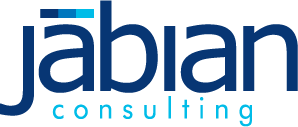As we march into 2023, let’s reconsider how we think about change. In my experience, organizations too often fall into the trap of focusing excessively on the transactional without due consideration of the behavioral and cultural components needed for a sustainable, long-term shift. Initiatives get bogged down in large, complex project plans where team members are focused on the satisfaction of ticking off tasks and a “green” status report. It’s the illusion of being “done.” But does this actually mean done? In reality, the hard work of engaging the hearts and minds of the people impacted by change is oftentimes regarded as a set of “support” activities illustrated by a long, ambiguous bar graph called Change Management which never has a “complete” status.
Without proper consideration of the behavioral, cultural, and transformational elements – often those things that sit between the lines of a project plan – a large-scale initiative can create more problems than the planned solution was intended to solve. In short, things can backfire, resulting in a demoralized workforce and significant rework.
We know two definitive things about approaching this type of disruptive change. One, it requires people to fundamentally shift how they view the work they do and how they interact across the organization. Two, helping employees navigate the shift requires engagement on the part of those enacting the change in addition to those impacted by it. We’re upending their current state, disrupting the rhythm they’ve spent years growing accustomed to. This upheaval often results in fear and anxiety about what the future holds and whether they will be able to perform within the new context of work. A series of project update communications from the program lead won’t address this challenge or the resulting anxiety.
In short, lasting change only comes through harnessing the collective passion, curiosity, and intellectual horsepower of the people in your organization. Slam in any complex change, in any organization, without a healthy level of commitment from your people, and see how long that change lasts.
What can we do as part of these change programs? I believe there are three fundamental pieces, all of which require a healthy, intentional commitment from business leaders:
Relentless Listening: People want to be heard. Leaders should post that mantra on their desktops. Communication plans are often too transactional in nature, focused on providing program status and information rather than the reason and purpose behind the change. While important, status updates are insufficient and do not allow employees to express their hopes, concerns, questions, etc. Transformational change programs build multiple interactive channels for people to be heard.
Leadership Visibility: There is no substitute for face-to-face engagement from leaders with their teams during times of change. Yes, COVID-19 made us savvier in remote communication, but leadership visibility, preferably in-person, communicates a level of commitment and credibility. People will recognize and appreciate the leadership effort.
Organizational Inquiry: Times of uncertainty and disruption can be ideal opportunities to nurture a spirit of inquiry across the organization. Create “green space” for people to question current practices, processes, or behaviors. Make it okay to challenge current thinking.
How are you thinking about transformational change differently in 2023?
